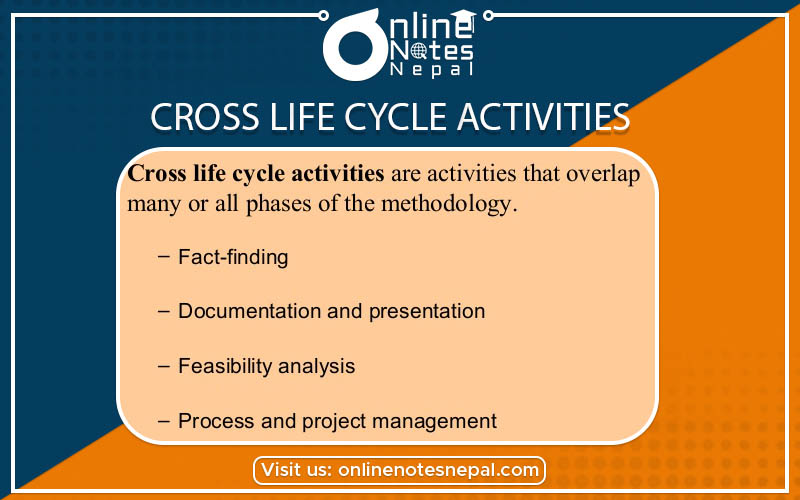Published by: Nuru
Published date: 16 Jun 2021

Cross Life-Cycle Activities is any activity that overlaps many or all phases of the systems development process.
Sequential Development
Sequential models such as Waterfall or V-Model rely on intensive periods of collecting and refining requirements for a product before design and development activity can take place. Products developed using these models are intended to be complete when released to customers. Central to the approach is an assumption that by adhering to the requirements captured at the outset, the product will fulfill the wishes of those customers:
Iterative Development
This is in contrast with iterative ways of working, with an emphasis on delivering less complex products, often to test customer response before making adjustments. The techniques encourage regular feedback from customers, and rapid response to that feedback; refining ideas and revisiting design and development activities with the intention of delivering products that better reflect what customers want:
Automated Tools and Technology
Computer-Aided Software Engineering refers to automated system tools used by systems analysts to develop an information system.
USE of case
Objectives to case
Categories of case products
Reverse engineering
automated tools that read program code as input and create graphically and textual representations of program design-level information such as program control structures, logical flow, and data flow.
Reengineering
automated tools that read program source code as input, perform an analysis of the program's data and logic, and then automatically or,
interactively with a systems analyst, alter an existing system in an effort to improve its quality or performance.
Components of case
The upper case-- case tools designed to support the information planning and the project identification and selection, project initiation and planning, analysis and design phases of the SDLC
The lower case--case tools are designed to support the implementation and maintenance phases of the SLDC.
Cross life cycle case--case tools designed to support activities that occur across multiple phases of the SLDC